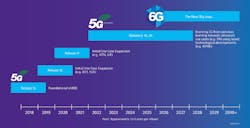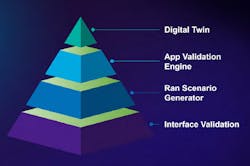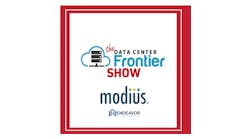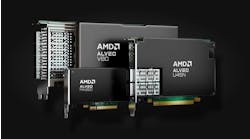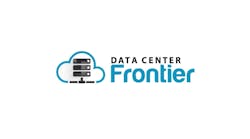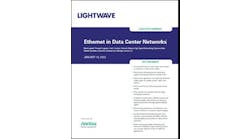Physical and Digital Network Modernization: The New Role of AI/ML in Testing Automation, Validation and Optimization
We conclude our article series on the positive impact that digital twins and AI will have on connectivity and the modern network. This week, we'll continue the conversation around digital twins and AI in the network and explore a real-world use case.
The pace of evolution for our networks is staggering. 3G took 15 years from inception to deployment; it took 12 years for 4G and eight years for 5G. With developments underway for 6G and with much technology and knowledge already in place, we could see the first networks being rolled out in less than eight years.
To keep pace with the level of evolution, data center leaders must adopt a new approach to testing and validating the capabilities of their networks. In that sense, digital twins encapsulate real-world and synthetic data for predictive analytics and maintenance.
But how does this translate to the network level? How can we leverage AI and ML to improve our networks and be more prepared for emerging requirements like 6G?
“For telecom, ICPs, and data center leaders, working with network-level AI and digital twins creates an entirely new arena to ensure the optimized delivery of content. These networks are often tasked with supporting ultra-low latency applications and use cases,” said Sameh Yamany, Ph.D., Chief Technology Officer for VIAVI Solutions. Yamany describes a VIAVI- inspired approach to testing in the AI world where AI, ML, and digital twins are impacting modern network designs:
✔ AI-generated test cases
✔ ML-trained realistic traffic/performance models
✔ AI-based regression testing reduces the time to build and time to certify
✔ ML interoperability models for certifications
✔ AI-guided installation automation for speed-to- deployment and reducing human error
✔ ML-trained realistic traffic emulation for certification
✔ AI-based alignment and verification
✔ ML-evaluation and completion reports
“So, what we are talking about is AI assuring or optimizing AI,” said Yamany.
THE NETWORK DIGITAL TWIN
Digital twins allow you to leverage intelligence calibrated by real network big data when deployed on a network. Consider this pyramid:
- The network digital twin. At the very top, you can create real-world models of your network and bring realism and intelligence together.
- Application validation engine. Before any deployment, you can use an AI, ML, and digital twin engine to measure and benchmark your application’s capabilities.
- RAN scenario generator. You can train and challenge your services and applications with a RAN scenario This testing incorporates interoperability and standardization of RAN elements, including unified interconnection standards.
- Interface validation. Using digital twins, you can test for RIC compliance and performance validation (E2, O1, A1 interfaces). (See bottom image)
You can confidently design and deploy innovative network slices using a digital replica of the physical network and service infrastructure. AI and ML in the network as a testing platform allow you to understand scale and complexity using machine learning models trained on real-life data and RAN parameters. From there, you can test policies, efficiencies, and SLAs before deploying anything into a real network.
Using AI and ML to find challenges and opportunities
Data center leaders must keep their network up- to-date to keep pace with connectivity and new applications. However, the deployment of new network solutions can be a challenge. Using AI, ML, and digital twins allows you to deploy often complex 5G networks with zero risk.
- Digital twins allow you to predict the effect of upgrades and any given configuration changes on the end-user services.
- In AI and ML, digital twins allow you to calibrate your ecosystem with accurate network data to make it as close to the physical network as
- Finally, these solutions allow you to leverage what-if scenarios using large and real historical data and ML-modeled RAN propagation scenarios mimicking the real environment.
You create a scalable platform for application development and network connectivity validation by leveraging a network-layer digital twin. Specifically, these tools enable you to find real opportunities to facilitate efficiency and growth.
- Digital twins enable innovative applications for new verticals against realistic scalability, resilience, and dynamic scenarios. This level of innovation is impossible without a real-life digital representation of a network.
- Suppose your business unit wants to test an entirely new product or market segment that’s reliant on your network. In that case, your digital twin can validate, score, and tune new application performance requirements via closed-loop iterations and real-life data models for RAN and core networks.
- Digital twins enable management, network assurance, and troubleshooting without interrupting network operation.
- Very importantly, before any real-world deployment, digital twins allow you to test and certify intent-based configurations, optimization, and policies before using them in real networks.
Now that we know how digital twins, AI, and ML impact network ecosystems, we have a good idea. Let’s see how these emerging testing solutions are used in real life.
In this industry, working with partners that simplify complex infrastructure components and allow your business to grow is critical. Not surprisingly, the modern network can get pretty complex. Partners like VIAVI have been used by operators looking to quickly and easily test their networks for years. The VIAVIA platform is agnostic to the hypervisors and hardware platforms on which the public or private cloud platforms are built.
From a data center and infrastructure perspective, operators can build an elastic test bed that can be scaled across multiple test locations — this will be key as operators begin testing core elements across several disaggregated cloud locations. It is the ideal solution for service providers as they look to roll out 5G core networks across both public and private cloud environments.
With this in mind, let’s explore how leaders in the infrastructure industry have leveraged VIAVI to revolutionize testing and network deployments.
VIAVI and VMware created a testbed as a service for RAN Intelligent
Controller testing
To enable mobile operators to introduce programmability to the RAN and help accelerate the adoption of Open RAN, VMware turned to VIAVI standardized frameworks and metrics for RAN Intelligent Controller (RIC) testing.
The RIC is a cloud-native central component of an open and virtualized RAN network, enabling the optimization of RAN resources through analytic processing and adaptation recommendations. The RIC takes advantage of native and third-party xApps and rApps — microservice-based applications operating in near-real time (near-RT) and non-real-time (non- RT), respectively — to enable operators to automate and optimize RAN operations at scale to reduce the operator’s total cost of ownership, and to introduce innovative new services.
VMware is focused on attracting and collaborating with a vibrant ecosystem of partners to help its operator customers adopt Open RAN with complete confidence. VIAVI has the industry’s most comprehensive portfolio of Open RAN test solutions and plays a leading role in defining test processes in the O-RAN ALLIANCE and Telecom Infra Project (TIP).
The opportunity and the business impact
The two companies will work together to demonstrate compliance with RIC-related requirements, assisting CSPs in validating the solution in the lab and scaling the production solution. The industry-leading VIAVI TeraVM RIC Test and the VMware RIC will form a joint testbed as a service for testing, profiling, and validating third-party xApps and rApps. In addition to the framework, the two companies will work together to drive industry consensus around testing methodology and performance metrics. By having pre-built test cases and a standardized test method for the RIC and xApp/rApp, operators can reduce the time it takes to validate the solution in their lab, meaning they can move to a production environment faster.
”We’re excited to work with VIAVI on helping move the industry forward to accelerate the adoption of Open RAN,” said Lakshmi Mandyam, vice president, Service Provider Product Management and Partner Ecosystem at VMware. “Our companies share a vision of what it will take to address the challenges hindering adoption by simplifying the path for CSPs to test, profile, and certify third-party xApps and rApps through a common framework. VIAVI’s leadership in Open RAN testing and VMware’s leadership in RIC make this an ideal collaboration.”
Download the full report, The Data Center Edge of Tomorrow: Five Critical Ways Digital Twins and AI Will Impact the Network, featuring VIAVI, to read exclueisve content, including an addtional use case example and final thoughts about the future.

